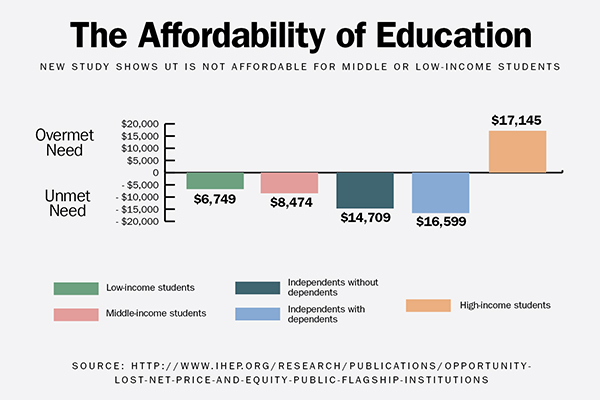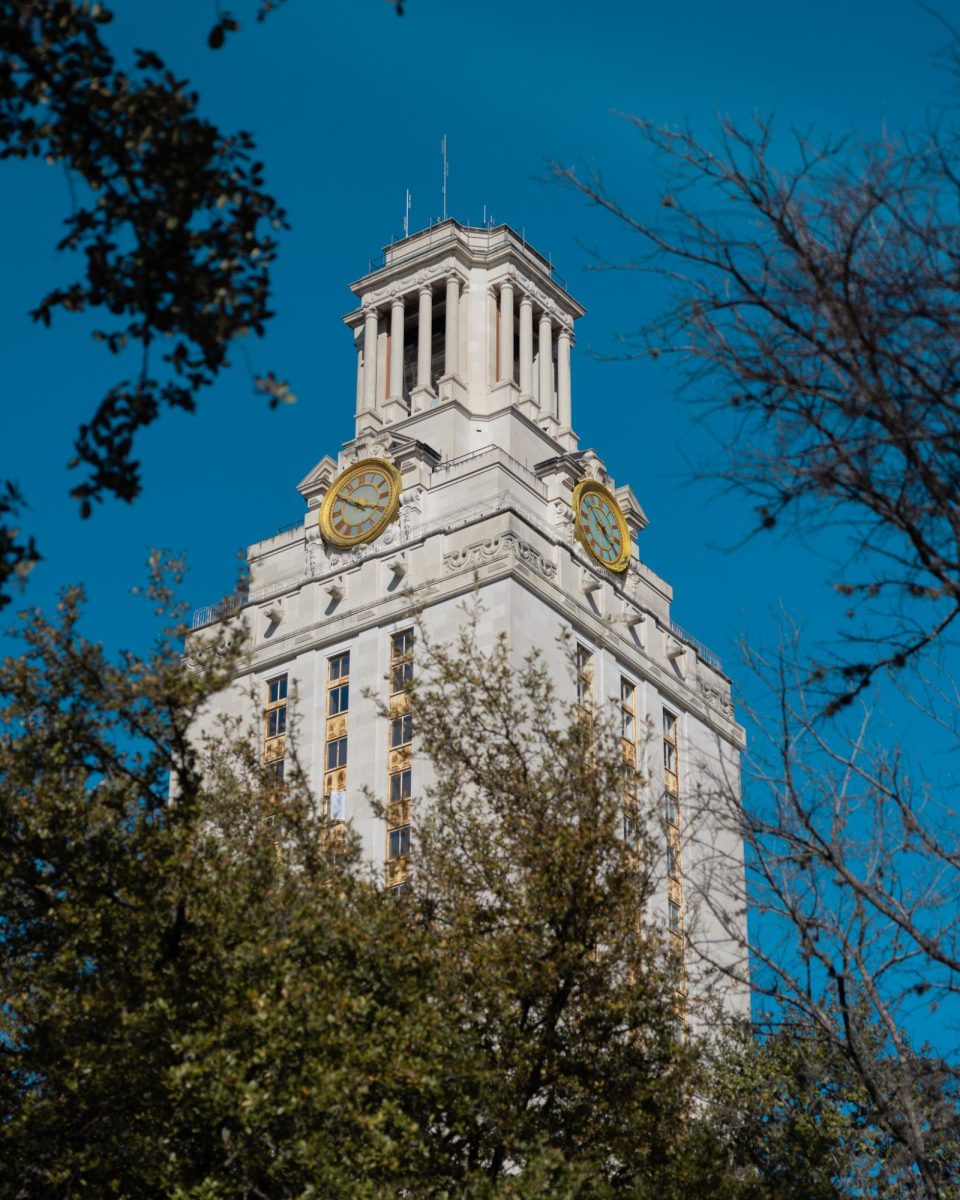UT-Austin is among the majority of flagship universities in the nation that are “not affordable” for low and middle-income students, according to a recent Institute for Higher Education Policy report.
The study found 46 flagship universities did not meet the affordability standards. According to the report, low-income students at UT needed $6,749 more to cover costs than the grants provided by the University gave. For middle-income students, that figure was $8,474.
“Flagship universities are public entities that receive taxpayers’ support, and so they really do have an obligation to serve all of their residents, not just the wealthiest individuals in the state,” said Kim Dancy, research associate for IHEP.
The report calculated the net cost for each student by using the school’s provided net price calculator. The amount of financial aid provided by a school was considered “not met” if the cost could not be covered by a student working 10 hours per week alongside their family setting aside 10% of income after taxes, bills and necessary expenditures for ten years, according to the report.
“Texas is sort of in the middle,” Dancy said. “They are not the worst of the institutions on either affordability or access, but they are also not great on either metric.”
Dianne Todd Sprague, executive director of the Office of Financial Aid, said the Texas Advance Commitment will give free tuition to students with an adjusted gross income of $0 to $65,000 and will provide assistance for an adjusted gross income of $65,001 to $125,000 beginning Fall 2020.
“These are additional funds that have been put into play since President Fenves has come to campus,” Todd Sprague said. “We now have approximately $20 million additional recurring funds to distribute to students, and we are extremely excited about that.”
Political communication junior Natalie Deller said she received financial aid through loans amounting to over $29,000, but no grants. Throughout her college years, she said she has worked two to three jobs to be able to afford housing and other necessities.
“You have the people that are able to afford (the University) and are able to succeed because of it, and then you have the people that are out here working two plus jobs … and are having a hard time meeting that potential because of all these external factors,” Deller said. “That gap between those people definitely affects how they are going to succeed after college.”


















